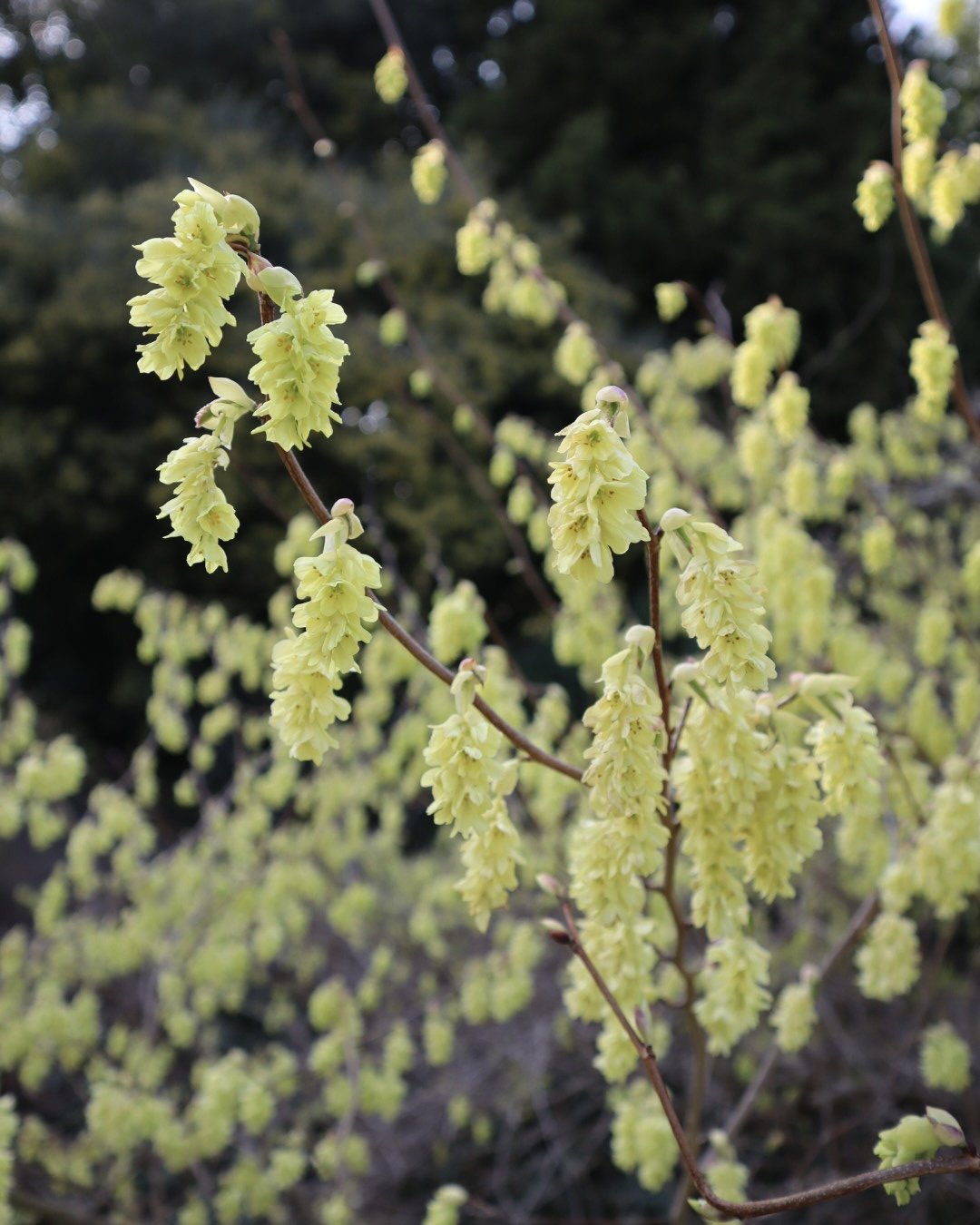Corylopsis glabrescens
Credits
Article from Bean's Trees and Shrubs Hardy in the British Isles
Recommended citation
'Corylopsis glabrescens' from the website Trees and Shrubs Online (treesandshrubsonline.
Genus
Synonyms
- C. gotoana Mak.
A deciduous shrub up to 15 or 18 ft high, or even a small tree; young shoots brown, quite glabrous and slender. Leaves roundish ovate or obovate, short-pointed, more or less heart-shaped at the base, bristle-toothed; 2 to 4 in. long, 11⁄4 to 3 in. wide; slightly glaucous and with a few silky hairs beneath; stalks up to 3⁄4 in. long; veins in seven to eleven pairs. Flowers pale yellow, fragrant, borne on drooping racemes 1 to 11⁄2 in. long in April; bracts boat-shaped, silky inside; flower-stalk glabrous; petals 1⁄3 in. long, obovate; seed-vessel 1⁄4 in. wide.
Native of the mountains of Japan; introduced to N. America in 1905 and to Kew in 1916. Rehder describes it as the hardiest in the genus, but most of the Japanese and Chinese species are quite hardy in this country, except that the flowers and young shoots are liable to injury by late spring frosts. It produces its racemes freely enough, but, in comparison with most of the species, these are rather small and not so ornamental. Its distinctive combination of characters are the almost entire absence of down or hairs, the short racemes carrying eight to twelve flowers, and the petals being longer than broad. Although C. gotoana Mak. is given above as a synonym of C. glabrescens and is usually considered as such, it is maintained as a separate species by Ohwi in his Flora of Japan (1965). The distinctions he makes are:
C. glabrescens. – Leaves ovate-orbicular, with prominently awn-tipped teeth. Stamens about half as long as petals. Confined to Kyushu.
C. gotoana. – Leaves obovate to obovate-orbicular, with shortly awned teeth. Stamens nearly as long as petals. Main and southern islands.
If this distinction is made, the cultivated plants would probably be referable to C. gotoana.
From the Supplement (Vol. V)
Morley and Chao do not recognise the distinction sometimes drawn between this species and C. gotoana.

